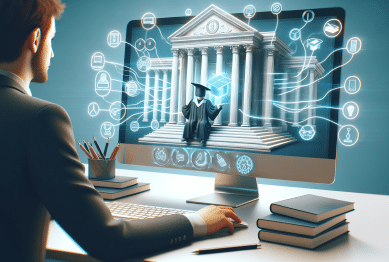Discover how bilingual education is transforming classrooms and society. This article dives into cognitive advantages, career opportunities, equity in access, and the real challenges facing students and schools in creating truly effective multilingual learning environments.
The Cognitive Benefits of Bilingual Learning
Exploring bilingual education opens a door to powerful cognitive changes. Research shows that students who participate in dual-language programs often develop enhanced executive functioning skills. These abilities, such as better problem-solving and greater mental flexibility, are crucial not just for academic success but also for life beyond school. So many parents and educators wonder why multilingualism seems to sharpen the mind. The answer lies in the brain’s need to switch between languages, which improves focus and memory. Cognitive science points out that young bilinguals outperform monolingual peers in tasks requiring attention and multi-tasking (https://www.apa.org/monitor/2018/04/bilingual). This skill is linked directly to the daily practice of managing two linguistic systems, reinforcing the value of immersion from an early age.
The impact of this type of education extends well into adulthood. Bilinguals often show delayed onset of age-related cognitive decline compared to their monolingual counterparts. This benefit is widely cited in neuroscience, as the constant switching between languages creates a form of mental exercise for the brain(https://www.ncbi.nlm.nih.gov/pmc/articles/PMC3583091/). Not only does bilingualism support memory retention, but it may also play a role in decreasing the risk of dementia and other neurodegenerative diseases. It’s a lifelong safeguard. Many find that learning a language in addition to one’s first provides a unique blend of mental rigor and stimulus that traditional curricula sometimes miss.
Beyond brain health, bilingual education nurtures creative thinking and adaptability. Young learners exposed to two or more languages become adept at viewing issues from multiple perspectives. This can foster increased cultural awareness and empathy, equipping future citizens to participate fully in an increasingly global society. Integration of language and subject-matter content means that students become critical thinkers rather than passive recipients of information. The simple act of code-switching—quickly adapting language for context—prepares students for complex, multicultural environments both academically and personally.
Employment and Career Opportunities for the Bilingual
Understanding bilingual education’s influence on job prospects sparks real curiosity. Studies consistently show that mastering two or more languages improves employability. Employers in sectors such as healthcare, government, technology, and education value candidates with multilingual skills. In fact, some companies offer higher pay scales or additional incentives for language proficiency. For many young adults, this means that developing fluency early on can support long-term career growth. Bilingualism adds a distinct edge in a competitive workforce, opening access to global markets and diverse clientele. The value goes beyond simple translation. It includes negotiation, client engagement, and management, all powered by cultural and linguistic versatility. For students choosing their future path, this becomes a practical consideration.
Professional mobility is another advantage. Bilingual graduates can apply for international roles or participate in cross-border projects. A nurse or doctor fluent in two languages, for example, can serve a wider range of patients more effectively, leading to better outcomes and job satisfaction(https://www.cdc.gov/socialdeterminants/faqs/index.htm). In business, bilingual managers often coordinate teams across different regions, building bridges that strengthen relationships. Public service roles, such as social workers or teachers, become more accessible and impactful with language proficiency. Bilingual education, in this sense, serves as a launchpad for impactful work in diverse communities.
Entrepreneurship also thrives with multilingual skills. Starting a business with a global vision requires nuanced understanding of local cultures and languages. From customer support to marketing, being able to communicate in multiple languages increases outreach and trust. Emerging industries like technology, tourism, and remote services all show rising demand for employees who can bridge language gaps. For learners and parents considering the practical benefits, bilingual education represents an investment not just in school, but in future earning and mobility potential.
Bilingual Education and Social Equity
Equitable access to quality education remains a pressing concern. Bilingual education, done well, can be a tool for closing achievement gaps among students. In many countries, children from minority language backgrounds face distinct disadvantages in mainstream schools. A bilingual curriculum, however, validates their native language while ensuring proficiency in the majority language. This dual support can boost self-esteem, academic performance, and long-term engagement with learning(https://www.unesco.org/en/education/multilingualism). In classrooms where students see their identities reflected, everyone benefits. Diversity is celebrated, not just tolerated. The simple act of including multiple languages in school signage or instruction is powerful for inclusion.
This isn’t just theory. Districts that have implemented dual-language immersion programs often report narrowing gaps on standardized testing for both language minority and majority students. It’s not only about language acquisition; these programs create environments where academic and social inclusion go hand in hand. When teachers recognize students’ linguistic and cultural assets, engagement and attendance rise. Teachers, too, gain valuable professional expertise as facilitators of diverse classrooms. Bilingual education, therefore, is as much about social cohesion as academic rigor.
Although challenges remain—from funding to teacher training—many policymakers advocate for expanded access. Governments and organizations increasingly view language integration as central to a just, fair education system. These efforts lay the groundwork for societies where linguistic minorities have equal opportunities for advancement. While not a simple fix, well-designed bilingual curricula can shift the landscape of equity and opportunity in real, practical ways. As more families experience the benefits, demand for these programs continues to grow.
Challenges and Considerations in Multilingual Classrooms
Bilingual education doesn’t come without its obstacles. Implementing successful programs requires sustained investment in teacher preparation, curriculum development, and assessment. Educators need training not just in second language acquisition, but also in culturally responsive pedagogy. Schools may face pressure to balance the needs of monolingual students with those of emerging bilinguals. This environment needs careful management to avoid marginalization or language loss. Parental involvement is another critical piece. Many parents need information and reassurance about the value of a bilingual approach, especially if it’s different from their own educational experience.
Assessment poses its own difficulties. Standardized testing is often designed with monolingual students in mind, raising questions about fairness and validity. Policymakers and school leaders must consider ways to measure both language and academic growth effectively(https://www.colorincolorado.org/article/10-tips-ell-assessment). The availability of high-quality learning materials also varies widely, sometimes limiting what’s possible in underserved areas. Program success hinges on resources, including community partnerships and supplemental support for struggling learners. Flexibility is key; programs need to adapt not just to the needs of students, but of broader school communities as well.
Despite these barriers, success stories abound. Many schools adapt by recruiting teachers who are themselves bilingual or with international experience. Others build strong links with parents through workshops and cultural events. Program flexibility, responsive leadership, and community engagement have proven to be crucial. Policymakers are also experimenting with new models of assessment designed for diverse learners. As dual-language programs scale up, lessons learned on the ground shape national discussions on equity and access. This ongoing adjustment is vital to the future of bilingual education.
Shaping a Multilingual Society for the Future
The rise of bilingual and multilingual education is about more than just learning grammar or vocabulary. It’s about preparing individuals to engage with the world—economically, socially, and culturally. Demands for global citizenship require adaptability and communication skills across borders. Multilingual graduates enter society ready to connect with people from all walks of life. These skills have never been more relevant in an era defined by migration, travel, and global collaboration(https://www.britishcouncil.org/research-policy-insight/policy-reports/languages-future). For some, this begins early in preschool. For others, it’s a journey taken during university or through work experience. But the trajectory is clear—those who invest in multiple languages invest in their ability to thrive in a changing world.
Cultural preservation also benefits from robust language programs. By teaching children in both their heritage language and a shared national language, communities retain important narratives, customs, and identity. This isn’t just beneficial for minority communities; society as a whole benefits from a tapestry of voices sharing ideas. Education systems that encourage language maintenance and exploration contribute directly to national unity and innovation. These advantages extend beyond the classroom and into civic life—public health, government, the arts, and commerce all profit from a more linguistically agile society.
There are important lessons for policymakers and families here. As more evidence emerges linking multilingualism with cognitive, social, and economic gains, the conversation will only intensify. Continued investment in research, program support, and access initiatives will shape whether these benefits are universal or limited to a privileged few. Emphasizing inclusion from the earliest years ensures that bilingual education is not just a trend—but a tool for building resilient, connected, and future-ready societies. The question is not whether bilingual education matters, but how it can be most effectively delivered for all learners.
References
1. American Psychological Association. (2018). The bilingual brain: Learning a second language requires constant active processing. Retrieved from https://www.apa.org/monitor/2018/04/bilingual
2. Alladi, S., Bak, T. H., Duggirala, V., Surampudi, B., Shailaja, M., Shukla, A. K., … & Kaul, S. (2013). Bilingualism delays age at onset of dementia, independent of education and immigration status. Neurology, 81, 1938-1944. Retrieved from https://www.ncbi.nlm.nih.gov/pmc/articles/PMC3583091/
3. Centers for Disease Control and Prevention. (2022). Social determinants of health: Frequently asked questions. Retrieved from https://www.cdc.gov/socialdeterminants/faqs/index.htm
4. UNESCO. (n.d.). Education in a multilingual world. Retrieved from https://www.unesco.org/en/education/multilingualism
5. Colorín Colorado. (2020). 10 Tips for ELL Assessment. Retrieved from https://www.colorincolorado.org/article/10-tips-ell-assessment
6. British Council. (n.d.). Languages for the future. Retrieved from https://www.britishcouncil.org/research-policy-insight/policy-reports/languages-future









